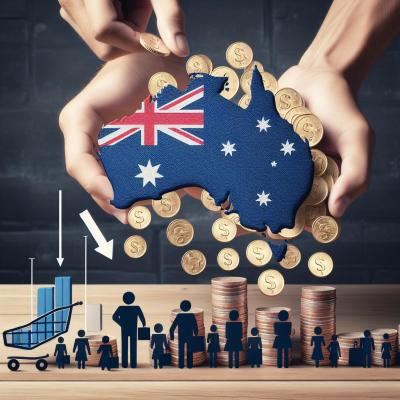The information disseminated on a Thursday highlighted a curtailment in the purchase cost growth, which had fallen to a 1.2 percent increase in the year’s final quarter. This decrement is observed as a subtle yet significant reduction from the 1.4 percent surge that was recorded in the preceding three-month period.
The downward trend in the cost increments is deeply intertwined with the climacteric turn of ebbing demand among consumers, a situation directly influenced by the rising tide of interest rates. These higher rates are anticipated to temper consumer expenditure, creating a ripple effect that ultimately bears upon the financial health of enterprises.
This phase is seen by market commentators as a transitional episode—where businesses could potentially recalibrate investment decisions, revisit pricing strategies, and rethink resource allocation—in response to the evolving economic milieu underpinned by consumer spending patterns and interest rate shifts.
While the phenomenon of diminishing costs procures a respite for the commercial sector, it constitutes an element in the complex tapestry of economic readjustment. Here's how the scenario is expected to impact the market:
- There might be a recalibration in supply chain operations as businesses adjust to a normalization of demand post-pandemic peaks.
- Consumer-facing industries could see altered sales forecast and inventory management practices commensurate with revised customer buying behavior.
- The possibility for redirection of capital investment toward innovation and operational efficiency may become more appealing for long-term sustainability.
As the full spectrum of the impact unfolds, the data provided by the NAB survey will be critically analyzed by stakeholders aiming to carve pathways of steady recovery and resilience. Amidst policies and market developments, the dance between demand, supply, and costs continues, sculpting the Australian business landscape none too gently.
Corporate Australia currently stands at the crossroads of cautious optimism and strategic planning, as fresher insights and trends emerge to influence decision-making processes. The recorded slackening in purchase costs indeed fosters a narrative of provisional relief—offering some breathing space, yet signaling prudence for what lies ahead on the economic horizon.
Published: Friday 2nd February, 2024
Last updated: Friday 2nd February, 2024
Please Note: If this information affects you or is relevant to your circumstances, seek advice from a licensed professional.










